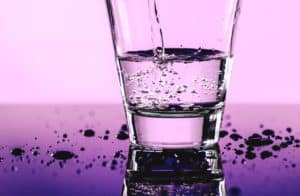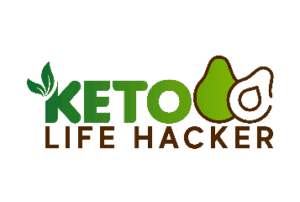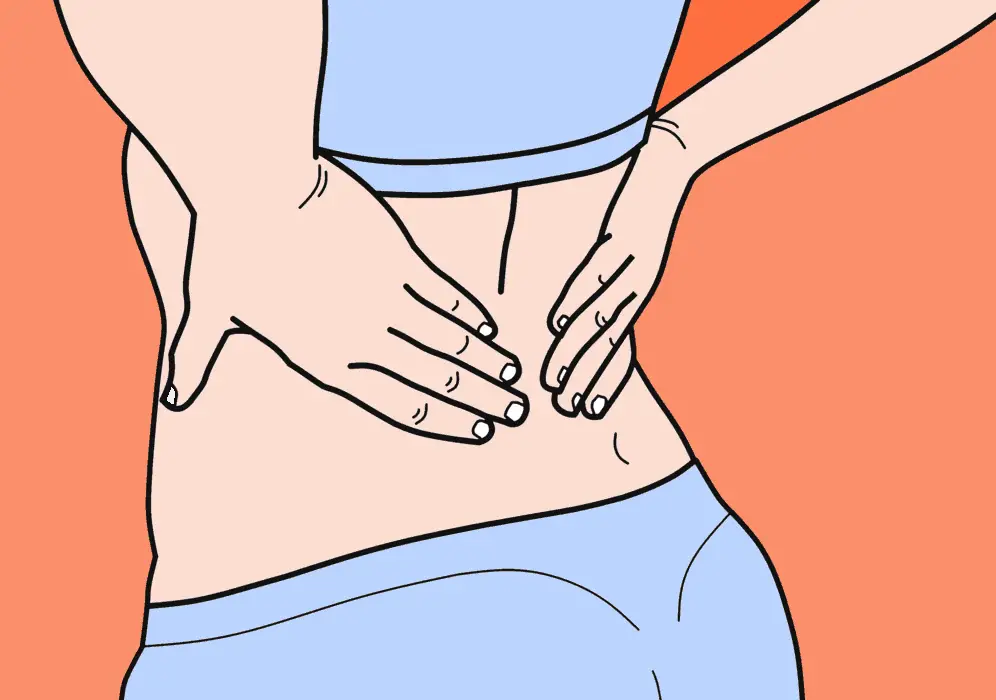If you’ve ever experienced a dull or sharp pain located in your lower back, it might actually be taking place in your kidneys, and could be indicative of some kidney related problems.
While issues of the spine and muscles are much more prevalent when it comes to low back pain, kidney-specific pain is definitely not something to be ignored.
While the ketogenic diet also has a lot of benefits for our kidneys, there are some associated risk factors of it as well. In this article, I’ll break down some of the big causes of kidney pain, and how they might be tied back to keto.
I’ll also include what to do about kidney pain without removing yourself from the keto diet, but first lets start with the more common causes.
What Causes Kidney Pain?
While kidney pain can ocassionally be linked to the ketogenic diet, there are a few other risk factors and causes to keep an eye out for when assessing your exact type of pain.
In order to properly treat your kidney pain, it’s important to effectively determine what’s exactly causing it.
Some of the most common causes of kidney pain include:
- Kidney Stones
Kidney stones tend to from out of the buildup of minerals or chemical wastes from inside the body. Kidney stones are generally connected to dehydration. These stones can be as small as a grain of sand or larger than a pearl. If they are small they may pass out of the body. However, larger stones can still get stuck in the urinary tract and block urine from passing. In either of these cases, mild to intense pain in the kidneys can result.
- Blood clots in the kidneys
Blood clots that build up in the kidneys can also cause some pain. These are medically referred to as Renal Vein Thrombosis. The most common cause of this type of blood clot is typically from another condition known as Nephrotic Syndrome, in which large amounts of protein are lost in the urine and the blood flow then gets an increased tendency to form clots within the kidneys.
- Blunt trauma to the lower back
Blunt force trauma to the lower back is definitely a common and viable cause to kidney pain. Kidneys are located just in front of your lower back, and are very sensitive. If you fall, or are hit at the right angle, you can cause some serious damage to the structure of your kidneys.
- Urinary tract infection
Generally, a kidney infection is more serious for the kidneys than a urinary tract infection. Nevertheless, the tract does lead up to the kidney, and pain can occur all along the tract, affecting your urethra, bladder, and kidneys with pain.
- Bleeding of the kidneys
Internal bleeding of the kidneys is typically diagnosed by blood in the urine. This condition is known as hematuria, and can be caused by kidney infections (pyelonephritis), bladder stones, kidney stones, enlarged prostate, and certain types of cancers.
- Polycystic kidney disease
PKD is characterized as a genetic condition in which fluid-filled sacs (cysts) start to form from inside the kidneys. As these cysts grow and expand, the kidneys can become enlarged and can eventually lose their their entire ability to function, resulting in localized kidney pain.
- Kidney infection
A kidney infection (pyelonephritis) takes place when bacteria from an associated infection of the bladder has started to spread to the kidneys. People who struggle with diabetes or who have a blockage in their urinary tract are much more likely to develop a kidney infection.
Symptoms of Kidney Pain
Kidney pain can often be difficult to distinguish from other types of back pain. Fortunately there are some unique symptoms to look out for when attempting to diagnose kidney pain, and the causes I listed earlier should all be taken into account when analyzing your symptoms as well.
The kidney pain that you feel can take place in the right or left kidney, or even both. It’s generally advised to speak to a doctor if you have any combination of kidney pain related symptoms, especially if you are also experiencing any of those above potential causes and risk factors.
Some of the most common symptoms of kidney pain include:
- Fever
- Painful urination
- Cloudy or bloody urine
- Dizziness
- Constipation
- A persistent need to urinate
- Flank pain
- Nausea
- Vomiting
Signs of more severe kidney damage that require immediate medical attention when presented together also include:
- Metallic taste in the mouth
- Bad breath
- Dry mouth
- Shortness of breath
- Confusion
- Swelling of the legs, ankles, or feet
- Muscle cramps
- irregular heartbeat
Kidney pain has also been known to radiate to other nearby areas of the body, including:
- the abdomen
- the sides
- the groin
- either or both thighs
The location of the pain can be a quick indicator to the type of associated problems you’re experiencing. For example, a kidney infection tends to result in a dull ache and feeling of soreness that remains stable until the infection subsides.
On the other hand, large kidney stones tend to cause excruciating amounts of pain that travel down the urinary tract, and can be monitored by the direction that they’re headed.
What Causes Keto Kidney Pain?
So if kidney pain stems from all of these other types of causes and risk factors, what is it’s connection to the keto diet?
The connection comes from an added side effect of following a diet high in fat.
While fats are generally good for you, and make up an important macro when it comes to following a ketogenic diet, there have been some connections made between diets that are high in fat content and associated kidney problems.
Here are a few potential causes that are specific to the keto diet that could be causing some kidney problems:
- Acidic urine
With an increased amount of ketones being released into your urine, there is a slight increased risk of developing kidney stones because the pH balance of your urine starts to change a bit. Additionally, diets that are high in animal-based protein and low in carbohydrates have been linked to an increased risk of kidney stones as well.
Too much animal-based protein is a fairly common issue among lots of keto dieters. While it’s perfectly possible to be vegetarian or vegan and stick to the keto diet, those who aren’t vegan or vegetarian often overuse meat and fish as a way to offset their lowered intake of carbohydrates, when they should really be focusing on fats instead.
- Dehydration
People that follow the Keto diet will likely know that it’s very easy to become dehydrated, especially if you’re no paying close attention to how much water and electrolytes you’re consuming after eating foods rich in salt and exercising heavily.
Dehydration has been linked to an increased level of uric acid in the body, which can directly result in kidney pain.
- Adrenal Fatigue
Your adrenal glands are positioned right above your kidneys, and are responsible for regulating important hormones like adrenaline and cortisol.
The keto diet has been closely correlated to adrenal fatigue, because of the added stress that often comes with it, alongside dehydration and symptoms of the keto flu.
When you experience adrenal fatigue, it will often manifest pain that is localized to the abdomen, as well as around the kidneys.
- High oxalate levels
Eating a lot of nuts, which are a common type of healthy fat snack on the keto diet, can lead to high oxalate levels. High levels of oxalate have also been linked to calcium-oxalate kidney stones. Nuts that are particularly high in fat that contain lots of oxalate include: macadamia nuts, walnuts, and pistachios.
- Too much animal-based protein
Because the keto diet is all about reducing carbs and raising your intake of protein and fats, animal-based protein is often included into people’s daily diets.
This is because animal proteins like beef, pork, eggs, chicken, cream, yogurt, butter, and full-fat dairy products are naturally high in both fat and protein content, which make them perfect staples of the keto diet.
Unfortunately, recent studies have determined that animal protein actually has a significant correlation with increased chances of developing kidney stones and experiencing other kidney related problems.
Additionally, a diet that is high in animal based fat and protein can also increase uric acid levels, and thereby decrease your citrate, which is a proven component to lowering your risk of developing kidney stones.
How to Get Rid of Kidney Pain on Keto?

So if fundamental aspects of the keto diet like eating fat and protein are problematic for our kidney function, then how do we get rid of and prevent kidney pain while remaining in ketosis?
- Stay hydrated
Keeping your hydration levels stable is one of the best ways to prevent kidney pain while on keto. Kidney stones are directly linked to dehydration, so just making sure that you get enough fluids that are rich in electrolytes should help you in a big way.
One of the easiest ways to do this is to just drink water (I prefer brands like SmartWater that are enriched with electrolytes).
- Consider cutting back on meat
I know it seems counterintuitive because you’re already cutting back on carbohydrates, but we really don’t need meat to survive on the keto diet. It’s extremely helpful for those that do eat meat to stay in ketosis, and I have nothing against it (I’m a bit of a carnivore myself), but cutting back and favoring alternative types of proteins within dairy products, nuts, and leafy greens is a great way to prevent the build up of uric acid.
- Try potassium supplements
Potassium is one of the primary electrolytes that help to contribute to general hydration and regulate bodily functions. Potassium has been proven to help regulate your overall body fluid balance, as well as assist with the health of your entire nervous system. Foods rich in potassium include: bananas, salmon, baked beans, yams, avocado, peas, and spinach.
When I can’t always reach my potassium goals through the food I eat, I like to use potassium supplements to help get me the rest of the way there. My favorite right now is Pure Encapsulations, which I get for pretty cheap off Amazon.com
- Introduce healthy fats
Another way to boost your heatlhy fat intake without eating more animal meat is by swapping it for healthy fats like avocado, MCT oil, olive oil, or coconut oil.
There are a variety of extra benefits from incorporating more healthy fats into your diet, and they can help contribute to feeling full while maintaining your ketosis.
- Try magnesium supplements
Magnesium is another positive element of our required electrolytes for hydration and multiple organ functions. Some added benefits of magnesium include: better bone health, better calcium absorption, and improved overall heart health.
Some of the most common sources for magnesium include: sunflower seeds, almonds, shrimp, and spinach.
When I can’t meet my daily magnesium goals, I’ll also try to incorporate magnesium supplements into my routine. My favorite right now is Mag-Ox, which I usually get when it’s on sale over at Amazon.com
- Consider kidney bean broth
Broth that has been cooked along with kidney beans may actually be able to help improve your kidney functions and overall urinary health. Kidney bean broth has been connected to aiding in the break down of kidney stones when incorporated into one’s diet.
White kidney extract is also a powerful carb blocker supplement, with other added benefits that can help if you’ve accidentally gone over your recommended daily amount of carbohydrates while on keto.
Does the Keto Diet Have Any Kidney Benefits?
Despite these potential problems, there are actually some powerful kidney benefits that come along with the keto diet. Specifically within those who struggle with diabetes, the keto diet has been linked to reversing the effects of diabetic neuropathy, which is a result of impaired kidney function from diabetes.
It has this effect on diabetic neuropathy primarily via increasing our body’s ability to control glycemic levels, and by altering the actual genetic expression within the kidneys.
For glycemic levels, one study found that diabetic mice who were placed onto the ketogenic diet saw results of more controlled glycemic levels, with normalized blood glucose levels.
In a recent study, researchers found that the genes that are responsible for neuropathy within diabetic patients were reversed within mice that were placed on a ketogenic diet and were confirmed in states of ketosis.
Lastly, the ketogenic diet has also proven to be beneficial for those who already struggle with kidney disease, particularly when it comes to cardiovascular health.
Those that have chronic kidney disease (CKD), have a directly increased risk in developing cardiovascular disease (CVD), and that those with CVD have an increased risk of developing CKD conversely.
Research has found that the increased consumption of fats recommended within the keto diet is responsible for improved cholesterol profiles, lowered blood pressure, and reduced risk of heart disease. Any reduced risk of heart disease directly correlates to a reduced risk of developing CKD.
Final Thoughts
First and foremost, if you’re experiencing chronic sharp or dull kidney pain, it’s always important to consult with a doctor before giving yourself a final diagnosis.
As we’ve seen, there’s an abundance of possible causes, and blaming the pain on your diet from the get go isn’t always safe. You should be clear with your doctor about your diet, as well as any other possible risk factors that could be contributing with your pain.
If you’ve been struggling with kidney pain, and know it’s because of your diet, give some of these tips a try and let us know how they go for you by leaving a comment below. I’m always on the lookout for more tips and tricks.

